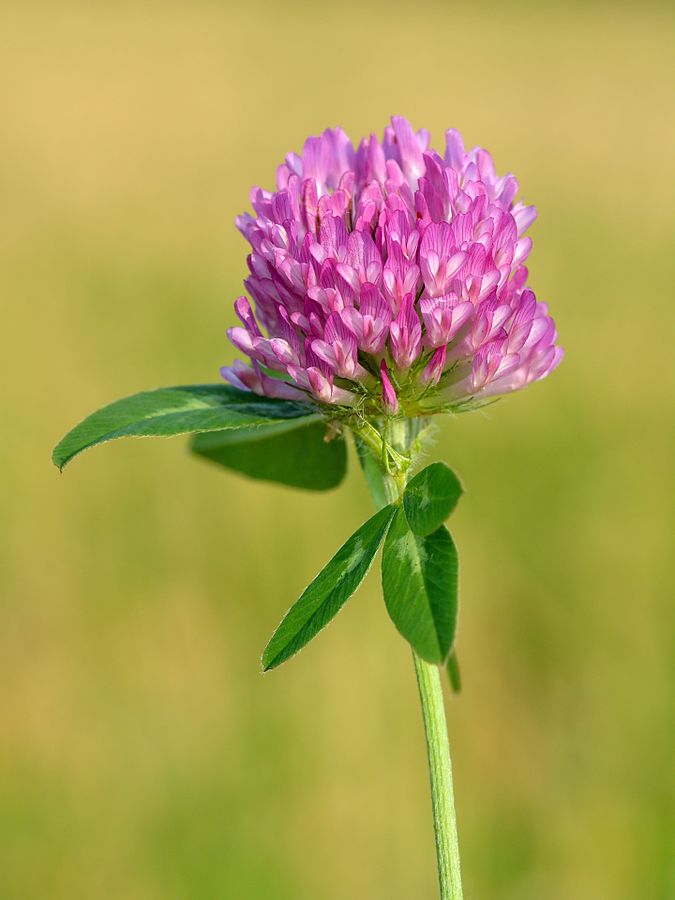In
March, the American Herbal Pharmacopoeia (AHP) published its new monograph and
therapeutic compendium for red clover (Trifolium
pratense, Fabaceae) flowering tops, aerial parts, and dry extracts.1
The long-awaited monograph includes a full suite of identity and quality tests,
documents historical uses of the plant, and provides a guidance on harvest and cultivation
practices, as well as a full review of clinical and pre-clinical pharmacology
and safety data.1
The AHP monographs are designed to provide a standard for herb purity and
identity, help practitioners make educated choices when prescribing botanicals,
and serve as a dossier for companies to ensure safety and substantiate dosage
and claims, according to AHP Executive Director Roy Upton.
“The
AHP monographs are the only such work in the world that we know of that combine
a critical review of the traditional knowledge base coupled with the experience
of modern clinicians with a critical review of the scientific literature,” Upton
wrote (email, March 24, 2017). “This provides the most comprehensive and
critical review of the therapeutic and safety data on the monographed herb anywhere
in the world.”
The
red clover monograph was initiated and supported by Linnea SA (Riazzino,
Switzerland), which makes Promensil, a preparation that contains red clover isoflavones
and has been the subject of numerous clinical trials.2
 Red clover was considered by Seventh-Day Adventist Church founder Ellen White to
be “one of God’s greatest gifts to man,” and it has been used historically by
herbal authorities as an alterative (blood purifier), for infections, boils,
skin conditions, vaginal discharge, fever, and inflammation, and to clear the
eyes, among many other uses, Upton said. The current primary interest in red
clover, he added, is for its use in reducing the severity of symptoms
associated with menopause. “Relief of menopause is one of the most sought-after
categories in the natural products industry. This is especially important
considering the higher risks of developing reproductive cancers that exist with
conventional hormone replacement therapy,” he said. Red clover was considered by Seventh-Day Adventist Church founder Ellen White to
be “one of God’s greatest gifts to man,” and it has been used historically by
herbal authorities as an alterative (blood purifier), for infections, boils,
skin conditions, vaginal discharge, fever, and inflammation, and to clear the
eyes, among many other uses, Upton said. The current primary interest in red
clover, he added, is for its use in reducing the severity of symptoms
associated with menopause. “Relief of menopause is one of the most sought-after
categories in the natural products industry. This is especially important
considering the higher risks of developing reproductive cancers that exist with
conventional hormone replacement therapy,” he said.
However,
there have been a number of studies that have called the efficacy of red clover
and isoflavones in general into question. As a result, one of the important
contributions of the monograph and therapeutic compendium, Upton explained, is
to provide accurate, fact-based information as well as to mitigate biased
reporting associated with, for example, concerns over the exposure of
phytoestrogens in those with estrogen-sensitive cancers.
“Because
phytoestrogens act similarly to estrogens, it stands to reason these should be
avoided in those with cancer, especially estrogen-sensitive cancers,” Upton wrote.
“However, a plethora of scientific data demonstrates no increased risk of
cancer when taking isoflavone-containing botanicals like red clover and that
there are a number of mechanisms associated with isoflavones that protect and
reduce the risk of cancer. This information is especially important for
addressing the safety of red clover.”
It
typically takes about three years to complete an AHP monograph. The AHP relies
on the work of numerous volunteers and collaborators. “The comprehensive nature
of the monographs and the extensive peer review they are subjected to, by
collaborators throughout the world, make it a very time-consuming process,”
Upton wrote.
Specifically
in the case of the red clover monograph, the AHP used 14 different
collaborators and an additional 20 reviewers. Contributors included
professional historians, international regulators, agricultural researchers in
Canada and the United States Pharmacopeia (USP), and reviewers included
herbalists and naturopathic physicians in the United States and Australia, ethnobotanists
from Canada and Australia, an obstetrics and gynecology specialist from Austria,
and researchers from the University of Illinois-Chicago, among others. The team
worked to explain why some studies show efficacy and others do not, as well as
to present the data in a clinically relevant context, which requires in-depth
familiarity with the literature and the pharmacological and physiological
principles involved. Upton added, “the analytical methodology provided courtesy
of USP was under revision, and we thought it best to harmonize with USP than to
offer an alternative method.” It is typical for the AHP to harmonize with
European Pharma (EP) or the USP on analytical methods, with a preference for EP
because its standard is more reasonable and encompassing, Upton noted (email,
April, 12, 2017). In this case, the harmonization did cause a delay in the
monograph because USP methods were under revision, and the AHP had to re-verify
that the methods worked as recorded.
The monograph and therapeutic compendium for red clover is available through the
AHP’s website at www.herbal-ahp.org.
PDFs are available for $39.95, and printed four-color versions can be purchased
for $44.95.
—Karen Raterman
References
- AHP releases
standards of identity, analysis, and quality and therapeutic compendium for Red
Clover and Red Clover Extracts. [press release]. Scotts Valley, CA: American
Herbal Pharmacopoeia; March 21, 2017. Available at: www.herbal-ahp.org/documents/press_releases./Red%20CloverPRESS%20RELEASE%20for%20Immediate%20Distribution.pdf.
Accessed March 23, 2017.
-
Novogen Consumer
Healthcare. Promensil: A clinical summary. Virtual Medical Center website.
Available at: www.myvmc.com/uploads/VMC/DrugImages/Promensil/Promensil-Clinical-Summary-Au.pdf.
|